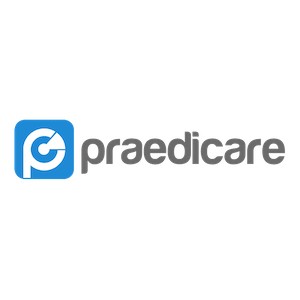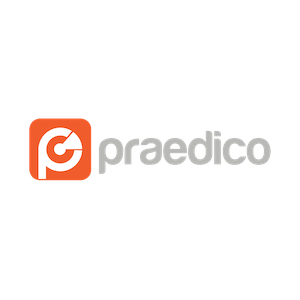visualization
See the following -
3D Slicer: An Overview
This article gives an overview of the open source medical imaging tool called 3D Slicer, which has been released under a BSD-style licence, and is a tool for visualisation and image analysis. Read More »
- Login to post comments
Big Data 2013: Industry Players’ Forecasts
There’s no shortage of year-ahead predictions in the tech industry. This is especially true in the Big Data world [...]. As it turns out, however, a number of companies in the space sent me their opinions on what’s going to happen next year. So I thought a roundup of some of these Big Data 2013 predictions, along my opinions of them, might be fun. Read More »
- Login to post comments
Ginkgo CADx: Open Source DICOM CADx Environment
Ginkgo CADx [1] is a multi-platform, open core medical visualization and image-based diagnosis framework designed for specialists, practitioners, and physicians. Developed by MetaEmotion Healthcare [2], this framework provides an end-user friendly interface and extensible application for visualizing DICOM [3] studies, diagnoses, and creation of new DICOM studies....Image integration is a mature deployment in radiology environments, where almost any image produced and consumed is integrated using HL7 and DICOM standards. Ginkgo CADx is willing to provide these workflows in other environments such as ophthalmology, dermatology, cardiology, pathological anatomy, etc.
- Login to post comments
How Data Analytics, GIS Helps Dartmouth Atlas Influence Healthcare
The Dartmouth Atlas of Health Care has more than 100 TB of Medicare claims data. This information, combined with peer-reviewed medical research, informs healthcare policy and helps institutions compare their quality metrics. Like any good atlas, it also uses data-driven maps to prove its points. Read More »
- Login to post comments
How I Use Linux for Theoretical Physics
 In 2008, I started studying physics and got in contact with Linux, since a bunch of people used it for data analysis and simulations. Comprehension came fast and easy with such people around, and I was strongly encouraged to get things done with Linux. I installed Ubuntu on my notebook, and soon got familiar with Bash and the standard tools. After some years I turned to theoretical physics. While I was writing my master's thesis I gained access to a workstation running Scientific Linux, and a cluster system with a few hundred cores. I was impressed that each of my peers had implemented his own customized workflow, and that it was actually possible to work entirely with the keyboard, which is inconceivable for a Windows user...
In 2008, I started studying physics and got in contact with Linux, since a bunch of people used it for data analysis and simulations. Comprehension came fast and easy with such people around, and I was strongly encouraged to get things done with Linux. I installed Ubuntu on my notebook, and soon got familiar with Bash and the standard tools. After some years I turned to theoretical physics. While I was writing my master's thesis I gained access to a workstation running Scientific Linux, and a cluster system with a few hundred cores. I was impressed that each of my peers had implemented his own customized workflow, and that it was actually possible to work entirely with the keyboard, which is inconceivable for a Windows user...
- Login to post comments
IBM Accelerates Open Database-as-a-Service on IBM Power Systems
 IBM today announced a new Database-as-a-Service (DBaaS) toolkit on Power Systems optimized for open source databases, including MongoDB, EDB PostgreSQL, MySQL, MariaDB, Redis, Neo4j, and Apache Cassandra to help deliver more speed, control, and efficiency for enterprise developers and IT departments. The new platform gives database administrators and developers the ability to easily deploy a fully configured private cloud with automated provisioning for open source database services...
IBM today announced a new Database-as-a-Service (DBaaS) toolkit on Power Systems optimized for open source databases, including MongoDB, EDB PostgreSQL, MySQL, MariaDB, Redis, Neo4j, and Apache Cassandra to help deliver more speed, control, and efficiency for enterprise developers and IT departments. The new platform gives database administrators and developers the ability to easily deploy a fully configured private cloud with automated provisioning for open source database services...
- Login to post comments
Kitware Unleashes Brand-New Rendering Backend in ParaView 5.0
On behalf of the ParaView community, Kitware announces the release of ParaView 5.0. The release follows closely on the heels of ParaView 4.4, building on its features while presenting a rewrite of ParaView’s rendering backend to leverage newer OpenGL features. This major milestone in ParaView’s life cycle ensures that the open-source, multi-platform data analysis and visualization application gets the most out of modern graphics cards and rendering systems for large data sets...
- Login to post comments
Open Knowledge And Data Festival: Data Journalism And Visualization Session
Let us be honest: the Data Journalism and Visualization session at the Open Knowledge and Data Festival was aimed at an elite audience. Read More »
- Login to post comments
ParaView in Immersive Environments
ParaView is a community based, multi-platform, open-source data analysis and visualization tool that scales from laptop to high performance supercomputers. ParaView has gained immense popularity amongst the scientific community as a universal visualization system. Early on we decided to integrate support for immersive environments directly into ParaView, rather than linking to an external library. We felt that there were sufficient components in ParaView’s design that could be extended to support immersive rendering and interactions, and that limiting dependencies would make our efforts more impactful and sustainable for the long term.
- Login to post comments
PraediCare
 Praedicare is a state of the art visualization, analytics and reporting system developed by Bitscopic that enables clinicians and administrators to discover, identify, and pursue opportunities to improve team coordination and deliver higher quality, predictable outcomes and care in the operating room (OR), post-anesthesia care unit (PACU) and intensive care unit (ICU). The OR, PACU and ICU have distinct needs since their focus is oriented towards acute care management, surgery, post-anesthetic recovery, critical care interventions and inpatient settings.
Praedicare is a state of the art visualization, analytics and reporting system developed by Bitscopic that enables clinicians and administrators to discover, identify, and pursue opportunities to improve team coordination and deliver higher quality, predictable outcomes and care in the operating room (OR), post-anesthesia care unit (PACU) and intensive care unit (ICU). The OR, PACU and ICU have distinct needs since their focus is oriented towards acute care management, surgery, post-anesthetic recovery, critical care interventions and inpatient settings.
- Login to post comments
Praedico
 Praedico is a platform developed by Bitscopic that provides powerful visualization, analytics, and reporting capabilities with a focus on Public Health Biosurveillance and early detection, monitoring, and forecasting of infectious disease outbreaks. Using Big Data and machine learning technologies, Praedico will: Analyze vast amounts of data across multiple EHR (Electronic Health Records) domains, Detect relevant abnormalities to discover the “unknown unknowns” within the data, Alert users of abnormalities and facilitate the sharing of appropriate data with key decision makers.
Praedico is a platform developed by Bitscopic that provides powerful visualization, analytics, and reporting capabilities with a focus on Public Health Biosurveillance and early detection, monitoring, and forecasting of infectious disease outbreaks. Using Big Data and machine learning technologies, Praedico will: Analyze vast amounts of data across multiple EHR (Electronic Health Records) domains, Detect relevant abnormalities to discover the “unknown unknowns” within the data, Alert users of abnormalities and facilitate the sharing of appropriate data with key decision makers.
- Login to post comments
What Can You do with Open Data?
 Play a word association game and the word "open" will almost surely be followed by "source." And open source is certainly an important force for preserving user freedoms and access to computing. However, code isn't the only form of openness that's important. Open data has been discussed for at least a decade. At the OSCON conference in 2007, Tim O'Reilly kicked off a bit of a ruckus when he suggested that open data might actually be more important than open code. Open data in this context mostly referred to the ability to export the user-created "Web 2.0" data, which was becoming important at that time. Tim Bray, then at Sun Microsystems, highlighted the issue when he wrote...
Play a word association game and the word "open" will almost surely be followed by "source." And open source is certainly an important force for preserving user freedoms and access to computing. However, code isn't the only form of openness that's important. Open data has been discussed for at least a decade. At the OSCON conference in 2007, Tim O'Reilly kicked off a bit of a ruckus when he suggested that open data might actually be more important than open code. Open data in this context mostly referred to the ability to export the user-created "Web 2.0" data, which was becoming important at that time. Tim Bray, then at Sun Microsystems, highlighted the issue when he wrote...
- Login to post comments
Why Your Organization Needs to Tap Health Data Analytics
 If there were any doubts about the value of data analytics for healthcare organizations to turn data into actionable insights, a new book from the American Health Information Management Association attempts to put those doubts to rest and provide step-by-step instructions for analyzing data and using statistical techniques. The co-authors of the book—David Marc and Ryan Sandefer, faculty members at the College of St. Scholastica in Duluth, Minn.—argue that proficiency in data analytics is increasingly important for all health information managers and health informaticians as the industry embraces quality improvement initiatives...
If there were any doubts about the value of data analytics for healthcare organizations to turn data into actionable insights, a new book from the American Health Information Management Association attempts to put those doubts to rest and provide step-by-step instructions for analyzing data and using statistical techniques. The co-authors of the book—David Marc and Ryan Sandefer, faculty members at the College of St. Scholastica in Duluth, Minn.—argue that proficiency in data analytics is increasingly important for all health information managers and health informaticians as the industry embraces quality improvement initiatives...
- Login to post comments